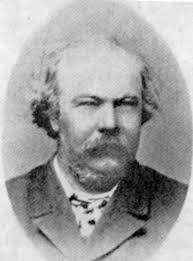 W
WAcademic fencing or Mensur is the traditional kind of fencing practiced by some student corporations in Germany, Austria, Switzerland, Latvia, Estonia, and, to a minor extent, in Belgium, Lithuania, and Poland. However, in Switzerland it is nowadays frowned upon to carry out this tradition, for it is considered unnecessary violence. It is a traditional, strictly regulated épée/rapier fight between two male members of different fraternities with sharp weapons. The German technical term Mensur in the 16th century referred to the specified distance between each of the fencers.
 W
WThe Brotherhood of Saint Mark was the name of the most important organization of German swordsmen in the 16th century.
 W
WDueling scars have been seen as a "badge of honour" since as early as 1825. Known variously as "Mensur scars", "the bragging scar", "smite", "Schmitte" or "Renommierschmiss", dueling scars were popular amongst upper-class Austrians and Germans involved in academic fencing at the start of the 20th century. Being a practice amongst university students, it was seen as a mark of their class and honour, due to the status of dueling societies at German and Austrian universities at the time, and is an early example of scarification in European society. The practice of dueling and the associated scars was also present to some extent in the German military.
 W
WThe Freifechter or Federfechter were a fencing guild founded around 1570 in Prague. They were known, from early in their existence, to be skilled, rivalling the Marx brothers who for the best part of a century had held a monopoly. In 1575 they were admitted by the council of Frankfurt in spite of the Marx brothers's protests, and on 7 March 1607, they were officially recognised by Rudolf II, although they had been acknowledged to be equally capable long before.
 W
WThe known history of fencing in France begins in the 16th century, with the adoption of Italian styles of fencing.
 W
WAlfred Hutton FSA was a Victorian officer of the King's Dragoon Guards, writer, antiquarian and swordsman. He originated the first English revival of historical fencing, together with his colleagues Egerton Castle, Captain Carl Thimm, Colonel Cyril Matthey, Captain Percy Rolt, Captain Ernest George Stenson Cooke, Captain Frank Herbert Whittow, Sir Frederick and Walter Herries Pollock.
 W
WThe term Italian school of swordsmanship is used to describe the Italian style of fencing and edged-weapon combat from the time of the first extant Italian swordsmanship treatise (1409) to the days of Classical Fencing.
 W
WLaurentius Guild (Laurentiusgildet) is a historical European martial arts group headquartered in Aarhus, Denmark with chapters in Nyborg and Vordingborg. Its membership consists of academic researchers specializing in fencing with a focus on the 14th and 15th centuries.
 W
WArchibald MacLaren or Maclaren was a Scottish fencing master, gymnast, educator and author who in 1858 opened a well-equipped gymnasium at the University of Oxford where from 1860 to 1861 he trained 12 sergeants and their officer who then disseminated his training regimen into the newly-formed Army Gymnastic Staff (AGS) for the British Army. The AGS was later to become the Royal Army Physical Training Corps. His training scheme was also later adopted by several British public schools including Rugby School in 1872 and universities. He wrote a number of books on physical training theory and practice.
 W
WMasters of Defence or Masters of Fencing is a widespread guild of teachers specializing in close combat military techniques with weapons, civilian fighting skills, and unarmed combat. The title was coined during the Medieval period, and referred to men who were particularly skilled at the art of fighting.
 W
WJean-Louis Michel (1785–1865) was a fencing master, sometimes hailed as the foremost exponent of the art of fencing in the nineteenth century.
 W
WDon Luis Pacheco de Narváez was a Spanish writer on the art of fencing.
 W
WThe Ragione di adoprar sicuramente l'Arme, si da offesa come da difesa was a famous treatise on fencing published by Giacomo di Grassi in 1570. The text was later translated into English and published again in 1594, as Di Grassi, His True Arte of Defence. The translation of Di Grassi was one of the three premiere fencing texts known from Elizabethan England.
 W
WA rapier or espada ropera is a type of sword with a slender and sharply-pointed two-edged blade that was popular in Western Europe, both for civilian use and as a military side arm, throughout the 16th and 17th centuries.
 W
WThe Renaissance Sword Club is a historical European martial arts group based in London, South East of England and Brittany, France. It was founded in 2013 by Rob Runacres. Its primary aim is the research and recreation of European swordsmanship of the sixteenth and seventeenth centuries, specifically those concerned with the rapier and spada da lato, as well as their companion weapons such as the dagger, cloak, buckler and rotella. Members have also pursued interests outside of the core curriculum in to staff weapons, longsword and small sword.
 W
WA Turnerschaft is a kind of Studentenverbindung, a German student corporation, similar to fraternities in the US and Canada. The Turnerschaften are a sports corps, and students practice the Mensur.
 W
WJohn Musgrave Waite was a Victorian fencing master, non-commissioned officer in the 2nd Life Guards.